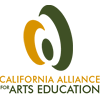Planning Step 3: Identify Your Strategic Directions
The next step in strategic planning is identifying the overall strategic directions that will guide your plan. Instead of looking at our practical vision alone, we develop creative, innovative actions that will deal directly with the challenges and move you toward your vision. The following workshop guides your team in identifying these strategic directions.
Click the links below to access a blank template and sample documentation of the Strategic Directions Workshop.
Strategic Directions Documentation (blank) [Word Doc: 37KB]
Strategic Directions Documentation (completed sample) [PDF: 120KB]
STAGE 4 - STEP 3 WORKSHOP | Identifying Strategic Directions
Transitioning the Group
The next step in strategic planning is identifying the overall strategic directions that will guide the plan and focus our actions. Instead of looking at our Shared Vision alone, we develop creative, innovative actions that will deal with the Challenges directly. At this point in the process having identified key challenges or blocks to moving towards our vision, creative ideas begin to naturally emerge from the group. Interestingly the creative solutions are tied to the naming of the challenges. In this next segment of planning we aim to organize these numerous ideas around a similar intent or outcome that they will produce.
You may want to share a diagram such as this with the group.
To emphasize the innovative and creative thinking you want to foster, you can use an exercise like passing around a common object like a paper cup or paper clip. Ask each person to suggest an “uncommon” use for the object. The concept that is being demonstrated is the never-ending creativity of a group when put to the test.
To get people to think strategically, you can make reference to the kind of down board thinking that takes place in chess — anticipating the chain of potential results from a single move. An example of this in the arts education arena might be to consider the requirement of a full year of visual or performing arts to gain admission to all University of California and California State University campuses (otherwise known as the “F” in the “A-G Requirements”). There is also the example of leveraged action, or how hitting the right pin in bowling brings all the pins down for a strike. Where in our district might one small action cause several things to change?
Focus Question
Print or write the focus question on a large sheet of paper and affix to the wall. Make sure it is big and bold enough that all participants can view the question easily (see example below).
Advance Preparation of the Sticky Wall
Facilitator puts up 9 boxes — each is half of a flip chart paper labeled A, B, C, D, E, F, G, H, I. The paper is sprayed with a repositionable spray adhesive so that as the half-sheets are mounted on them they stick like a sticky note. If spray isn’t available participants can use bits of tape on their half-sheets. The boxes are lined up 3 across and 3 down (see example below).
Setting the Context for Brainstorming
Have members of the group read the main elements of the Shared Vision they created and then read the key Strengths and Challenges from the previous section. Point to one of the Challenges and ask for one wild or bold action that could be taken to deal with that block. Get several ideas. Then ask for an idea that might be smaller, conserving something that is a strength. This is just to prime the pump…to give people an idea of what they are being asked to do. Then have them individually brainstorm ideas recording them on paper as a list. Each person needs to come up with at least 10 ideas or answers to the Focus Question above. Give people plenty of time to think here. 10-15 minutes may be needed.
Brainstorming Ideas
- Individually list 10-12 actions that we can take to overcome one of our Challenges.
- Then working in pairs (or threes or fours if the group is large), compare your brainstorm ideas.
- Together decide on your top 4-6 ideas; write the ideas on a half-sheets of paper.
- Instructions for writing the half-sheets: Write big, 3-5 words, 1 idea per sheet.
Putting Like Ideas Together
- The Facilitator collects a first round of actions on half-sheets (aiming to get up 14-18 total) and reads each one as they place them first randomly in the boxes and the rest on the wall next to the boxes.
- The participants are asked to find two ideas that describe actions that are similar in intent or outcome. When two are identified they go into one of the boxes.
- Typically the facilitator will need to ask for three rounds of half-sheets. All ideas get mounted on the wall eventually. Make larger clusters of similar ideas within the boxes as successive rounds of half-sheets are shared.
Identifying Strategic Directions
- Using an action verb, quickly give a name to each box that captures the intent held in that group of ideas.
- Then taking the larger view of what is on the wall, ask which two boxes are strongly related or have a similar intent. Pair these boxes by physically placing them beside one another. Continue this until you have the boxes arranged side by side in 2-4 horizontal lines. These are your strategic directions.
- Select one row of boxes. Ask the group to identify the direction that is shared by all of the boxes. Suggest strong words that end in “ing” such as: engaging, empowering, catalyzing, positioning, venturing, enhancing, supporting, expanding, developing, updating. Using gerunds such as these gives the strategic directions in an active, ongoing tone that drives your planning over the long term.
- Once the name for the overall strategic direction has been developed, it can be written in the arrow to the right of the line-up. There may be 3-4 strategic directions in all, with 1-4 boxes of ideas in each (see example below).
Final Check
Check back with the group and review the titles of Practical Vision and the key Challenges. Will the Strategic Directions resolve the underlying Challenges and move us toward our Vision? Do they capture all the elements and opportunities contained in the Vision. If not, perhaps something needs to be added, or maybe certain ideas will need to be placed on the back burner for the next three years.
Closing Conversation
Ending with this conversation signals celebration of the group’s effort and allows them to take a minute to reflect on the import of what they have done.
- Which direction is key in your mind?
- Which ones support the key direction?
- Which direction builds on our strength?
- Which ones venture into new territory?
- Where are the breakthroughs?
It is exciting to see our overall directions emerging. Thanks for your insights and participation.







